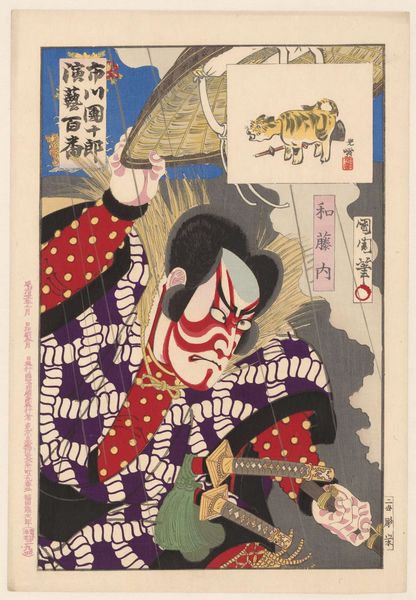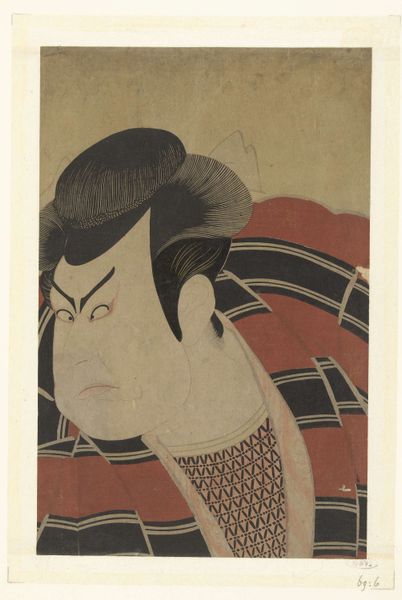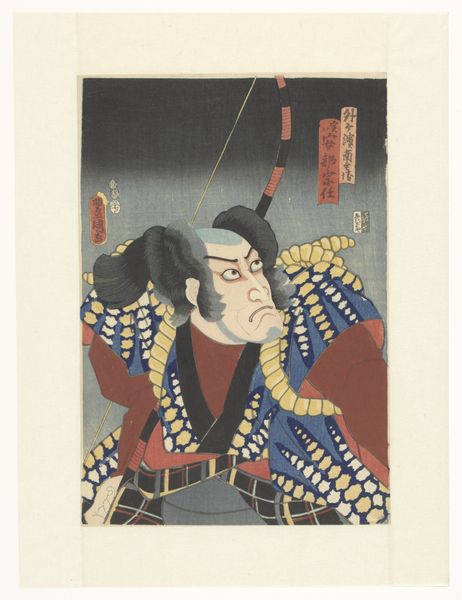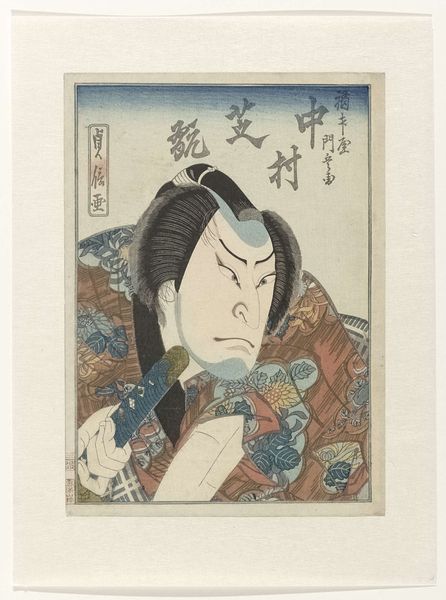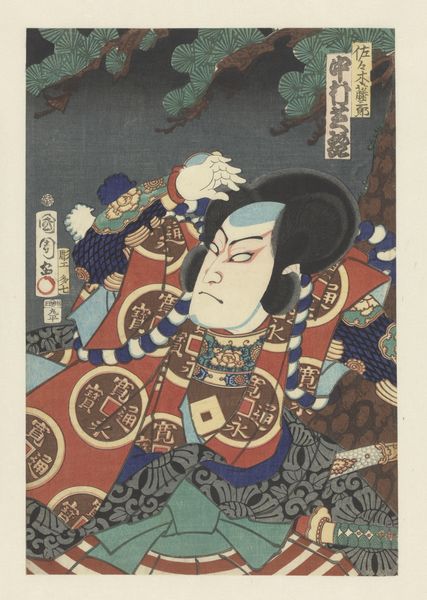
Makinohara at Mochizuki Station- (Actor Nakamura Utaemon IV as) Ōtaka Tonomo Possibly 1852
0:00
0:00
print, ink
#
portrait
# print
#
asian-art
#
ukiyo-e
#
japan
#
figuration
#
ink
#
naive art
#
watercolour illustration
Dimensions: 14 × 9 3/4 in. (35.56 × 24.7 cm) (image, sheet, vertical ōban)
Copyright: Public Domain
Curator: This woodblock print, “Makinohara at Mochizuki Station - (Actor Nakamura Utaemon IV as) Ōtaka Tonomo,” attributed to Utagawa Kunisada, possibly from 1852, immediately strikes me with its intense, theatrical presence. The vivid color and bold lines are captivating. What grabs your attention most? Editor: For me, it's the sheer amount of pattern and texture competing for my attention. The kimono is a riot of shapes and colours, the red wig is so voluminous, and even the background details like the trees and the calligraphy seem equally prominent. How do all these material components inform the meaning, especially when it comes to understanding traditional social dynamics reflected in Ukiyo-e prints? Curator: Good question! Let’s think about the labour involved in producing something like this. Woodblock prints were a commercial art form. What does the intense detail, the multiple blocks required for the different colours, tell us about the economics of art production during that time? And how does this method democratize representation, offering multiple impressions for consumption, diverging from exclusive, single artworks for the elite? Editor: It suggests a market for these prints wasn't solely reliant on wealthy patrons. Perhaps a rising merchant class or wider urban population found these images accessible. The subject, a Kabuki actor, makes me think of popular entertainment of the time. Would you say that this reflects on changing social structures and wider consumption habits? Curator: Exactly. Think about the materials themselves. Wood is relatively inexpensive and widely available. Ink, too. And consider the process. Many hands were involved - the artist, the carver, the printer - a division of labour enabling mass production. This print collapses high and low culture and transforms visual art into mass consumable goods. Do you see any visual indications that the figure in the image reinforces social class or that it maybe contests this stratification? Editor: Now that you mention it, I think it's important that the artist is representing a Kabuki actor instead of maybe someone who belongs to a higher social class like the Emperor, which maybe questions this type of social organisation. That's something I missed on first viewing. Curator: Indeed. Focusing on the materials and modes of production reveals this work as far more than a simple portrait. Editor: I see that now. Looking at the tangible elements, like the wood, ink, and labour, exposes its historical circumstances more vividly than just interpreting symbolism alone.






